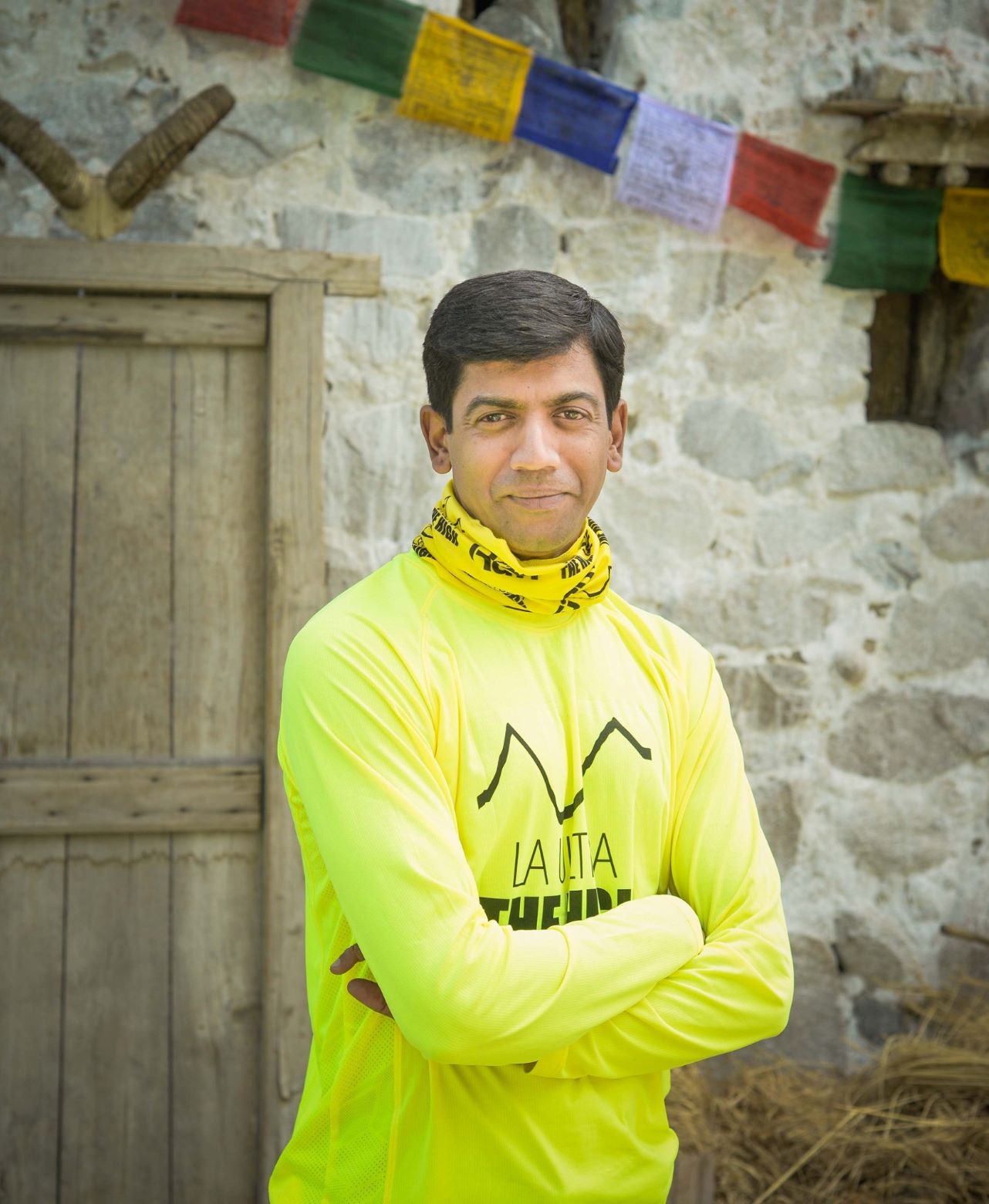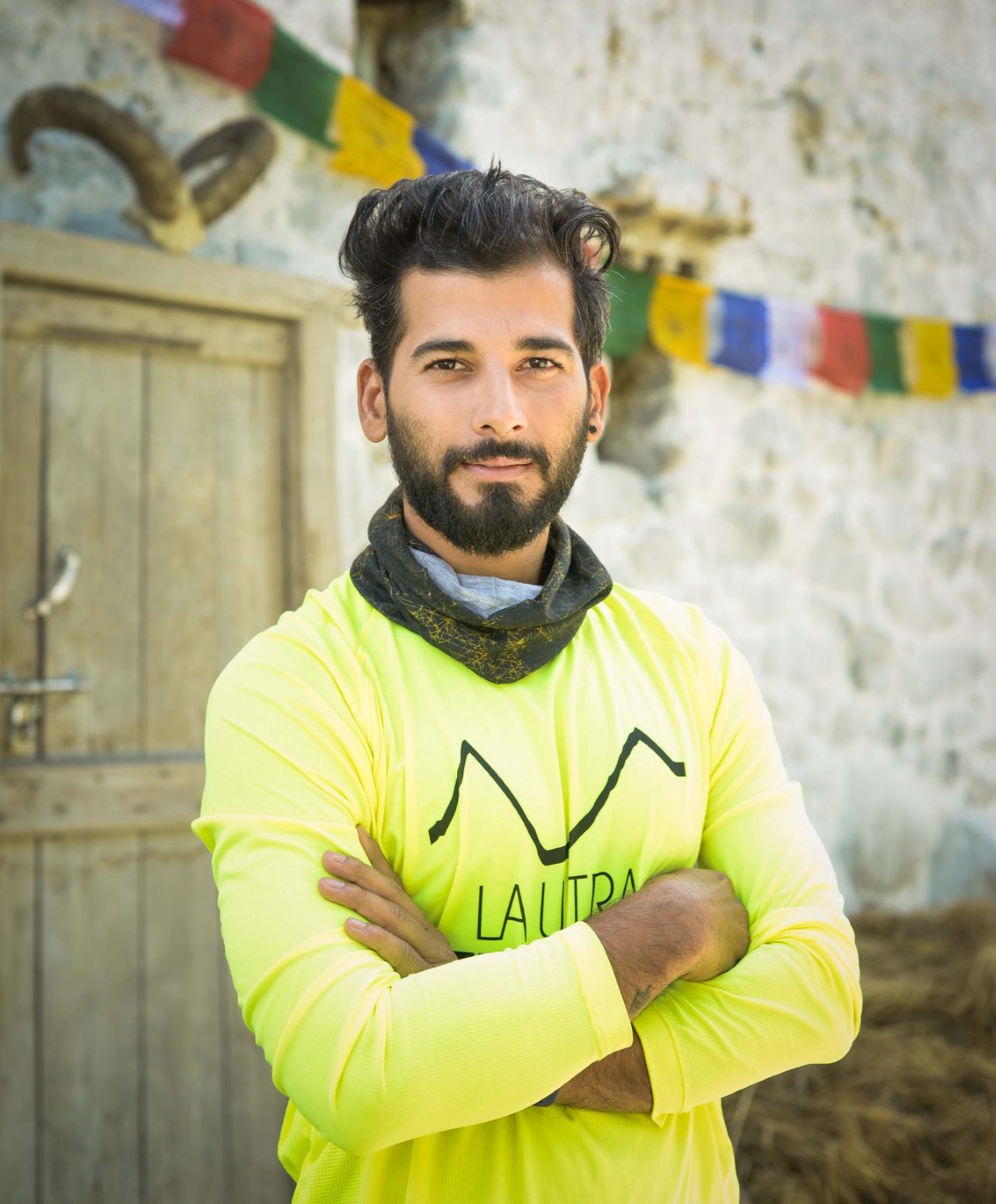(In case you haven’t already done so, here’s where you can catch up with Part 1 and Part 2 )
“It’s never about the distance, or how much and how long you run. It’s about tackling the La Ultra each of us have within us that matters.”
I have heard Rajat say this more than once. And I saw these as not merely words when I saw it unfold in front of my eyes.
In different ways, the runners from the 55 km through to the 555 km category expressed the shift they felt within themselves. They came face to face with the silences, mostly because of the lack of connectivity with the world due to the limited phone networks in some areas. There were, of course, those mountains, the inclement weather, the rarefied air, beyond all of which lay a test of their own will and strength, and how far they could go, how deep they could dig.
The layers finally start coming off. For all of us.
I had been sitting in the car for hours on end, often waiting by the roadside for the last runner to pass so that we knew everyone was accounted for. The mountains stood resolutely, towering over you on all sides, like a dark mirror nudging you to face those deep, dark fears, those questions about your life which you had shelved away for a distant (hopefully never) future, dreading what they might bring up to the surface. And you had no choice but to turn inward, to look at those reflections, to hear answers being echoed from deep within, goading you to live authentically, fearlessly, with humility and a commitment to not just the self-preserving you, but to others around you who mattered.
The “brokenness” made its presence felt, and all you could do was let it engulf you, let it hold you in its grip, till you look at it, unflinchingly in the eye. That’s when you realize that in the brokenness is a beauty and a strength that you had never experienced before. It reveals you in your truest form, however uncomfortable this newness is. The transformation is underway.
Yes, the mountains have a way of shining a light on your deepest thoughts. During the course of La Ultra, I heard other people share similar thoughts, as I myself went through a metamorphosis of sorts.
Where was I? Oh yes, the cutting down to size of the human condition.
When you are in the middle of nowhere in the dark hours of the night, staring up at the Milky Way, you feel suitably dwarfed, insignificant, and humbled. We found ourselves parked once again on the side of the road close to midnight, somewhere near Wari-La top at an altitude of 15000 feet. I asked Norbu to turn off the headlamps of the car so that the sky could be seen in all its glory. The silence was all pervading, as I looked up at what seemed like a sheer blanket of twinkling lights, only to be distracted by the sight of a few shooting stars. How can we even dare to think that we are larger than this cosmos? And back into the race, we were soon going to know whose word was final, who would catch us by surprise yet again.
It was day 2 of the run, and I looked up the weather forecast for Wari-La, the next mountain pass the runners across all the categories (55, 111, 222, 333, 555 kms) would traverse: Cold, high of 3C, low of -5C, 0% chance of precipitation. So far so good. We would be spared the trauma of what transpired at Khardung-La, we safely assumed. Were we wrong!
As the runners went up the mountain, there was a blizzard, which meant that the last 4 kms of the roads leading to the top of the mountain pass were icy and slippery.
Grit and perseverance started shining through as Amit, the only participant in the 222 kms category out of a total of 9, made it to the finish line within the cut-off time of 48 hours.
You see words like “mind over matter” come to life when runners persist despite their body giving them signals time and again that maybe it’s time to stop, be it because of fatigue or an injury that was threatening to flare up and make it difficult to move on.
Shikha, who was attempting the 222 kms this year, after having been the fastest female finisher in the 111 km category in 2018, was someone who garnered immense support through the race with her sheer will power and quiet determination. Having managed the previous cut-offs till South Pullu well, and reaching the 173 km despite an injury to her shin, she was hopeful of finishing the remaining 49 kms. Till the blizzard at Wari-La happened and the remaining distance seemed daunting to traverse due to the weather conditions. The injury was also rapidly worsening.
Gregor whose generosity I spoke about in my earlier post, rose to the situation and supported Shikha on the course, being by her side, encouraging her to go on.
There comes a point when the body reaches its limit and the mind eggs you to continue, to push those limits further, when even reason fails and you want to just keep ploughing ahead. Till you just can’t go on because the target keeps getting more and more distant, and the physical body is breaking down further with each step. Feeling crestfallen, Shikha finally decided to stop at the 215 km mark, a mere 7 km short of the finish line.
But here’s the thing: the heart and mind don’t give up. You see growth in setbacks, a deeper resolve to come back and take care of unfinished businesses the next time around. You don’t see non-completion as a failure but as a testimony of just how much potential you have to keep on marching forward, stronger, with each step being surer next time. Dreams were negotiated with, and expectations were tempered.
The dog that was trailing Jasmine on Day 1 (fondly christened “Indie”), was found running alongside Cassie when we last sighted her. It is our guesstimate that Indie would have run more than 100 kms by then. We didn’t see her again though. In hindsight, I should have requested Rajat to deploy a separate crew car for Indie, La Ultra’s first canine ultra-runner for this special edition😊. Who knows what potential she would have tapped into, lost in translation with all of us, but again showing that anything is possible amidst the beauty of nature where silences speak more than words ever would, and where deep connections form, and hearts unite.
Meanwhile Cassie and Nischint both pulled out of the 333 category due to the pounding by the weather, compounded by hypothermia, fatigue, exhaustion, and sleep deprivation.
Around the 260 km mark , we were now left with four of the original five 555 kms participants still in the running.
A little digression.
Now that the race is over and we have the results, I can tell you that the thoughts I had at the start of the race were probably the same as what most people including, dear Reader, you had about this category.
In the first place, who were these guys who were even thinking of attempting 555 kms in 5.5 days? And how many, if any at all, would finish?
Some guessed zero finishers. The optimistic, hopeful ones amongst us said maybe, just maybe, there would be one or two.
Time would tell.
But let me first introduce you to these amazing individuals.
Jason (Australia): Is one of the strongest social change agents and influencers I have met. Having struggled with clinical depression himself, he now uses ultra-running and fitness to encourage people to become mentally and physically fit. He completed the 222 kms run in 2018 at La Ultra.
Matthew (USA): Now lives in Bulgaria after having engaged in a soul-searching expedition around the world for two years and realized that one needs to have a raison d’etre other than just working to earn a living. He and his partner, Cassie, passionately run ultras, and came to Ladakh a month before La Ultra to train in the mountains. He completed the 333 kms run in 2017.
Praveen (India): The twinkle in Praveen’s eye, his passion, enthusiasm, and his commitment to whatever he does made an impact on me. The want to do more was so strong, that you caught yourself making his dreams your own. He completed the 222 kms run in 2018.
Ashish (India): His running spans only 5 years, and Ashish already had the most dramatic finish at the 333 km race in 2018, when he crossed the finish line with a mere 31 seconds to spare. His simple response to my question of why 555 km: “You need newer challenges to test yourself, and here I am again.”
I was looking forward to seeing these runners on the course and observe how the days would pan out for them.
(Above (L-R): Matthew, Ashish, Praveen, & Jason, the 555 km participants.)
We were now on our way to the Tanglang-la mountain pass, and then onwards to Debring at a distance of 333 kms mark, where 72 hours was the cut-off time for the runners to get there.
There were crew cars tagging each runner and I was in one of them.
I hopped out at one point on the ascent to speak to Matthew, who was, at the time, in the lead by almost an hour.
I might have walked just 200 meters with him but that was enough for me to feel the effect of the altitude and the reduced oxygen. And here he was effortlessly walking-running on Day 3 of the race. We talked some, as I wanted to gain an insight into how he was feeling. It seemed like a casual conversation two friends would have over coffee. There was a smile, an optimistic attitude, and a preview of the lessons the mountains were teaching.
“What’s been the biggest challenge so far, Matthew?” I asked him.
I was expecting a reply around the difficulties he may have faced along the way.
“Cassie not being able to finish 333,” he said instead.
I would later learn more about why it wasn’t about the distances, or the ascent, or the weather that most of us would have expected him to talk about.
“See you, Divya. It ain’t so bad, right, walking up the mountains?”
He and I laughed. 280+ kms and he was as spirited as if he had just begun to run.
At this point, Ashish was in second place, Praveen third, and Jason fourth.
How and why were these runners in the 555 kms category gunning so strong, when other runners in the shorter distances had found it difficult to continue? Was it really the weather? The mountains? The distances? I would soon find out as the days rolled by.
Word came that Praveen had decided to pull out of the race somewhere around the 280 km mark.
And then there were three…
<The concluding Part 4 coming up shortly>






